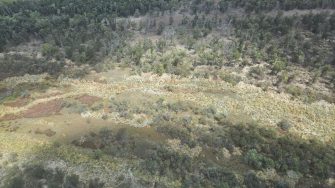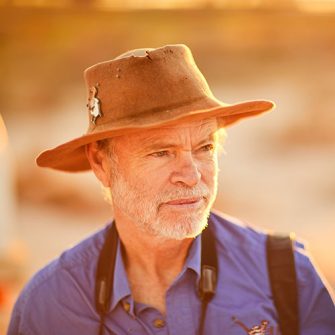
Date: Monday November 6th 2023
Project: Eastern Australian Waterbird Survey
Observers: Richard Kingsford (UNSW), Jody O'Connor (SA DEW)
Pilot: Thomas Clark
We headed out from Sydney to Moree in northeastern NSW. It was first a straight transport flight north before surveying the Gwydir River and its wetlands. The country is dry. After the plane and our bodies were refuelled we set out to the west. There were wheat crops, where cotton was usually grown, probably because there was not much water.
Harvesting grain crops along the Meehi River
We surveyed down the Meehi River and Mallowa Creek first. These once had extensive floodplains but are now hemmed in by cropland where the floodplain has been cleared. There was only just more than a trickle of water going down this system and certainly none on the floodplain.
Surveying along the Meehi River, along half empty storages usually full for cotton crops
There were a few Wood Ducks and the odd Black Duck, along with Pacific Herons.
The view from inside our cabin as we surveyed down the Meehi River
At the end of the Gwydir River, it meets the Barwon-Darling. Here, there are a series of lagoons. These always have a few Black Duck and Yellow-billed Spoonbills. The lagoons had dried back quite a bit, but had their usual complement of less than a hundred waterbirds.
Lagoons at the junction of the Gwydir and Barwon-Darling Rivers
We then headed east towards the main Gwydir wetlands, including the Gingham Watercourse. Unlike last year there was very little water in these systems. Most of our usual survey path was over the dry river bed. Some of the reed beds still had a green tinge but most had dried right back to their brown, yellow colour.
Surveying the dry reedbeds along the Gwydir wetlands and Gingham watercourses
Pear Paddock, one of the main wetlands in the Gwydir wetlands was dry
Expectedly, with little water, there were few waterbirds in many of the areas. However we did find some flooded patches, with good concentrations of waterbirds. These sections are indicative of how this system can look.
One relatively small area of no more than a few hectares had hundreds of Black Duck. It was also great to see a flock of about 30 Brolgas. Along with quite a few Glossy Ibis in this area.
Some of the Brolgas on small flooded areas of the Gwydir wetlands
We then headed east along the Gwydir River which had a bit of water flowing in its main channel, this had attracted a few waterbirds. Some of the river lagoons with wider expanses of water were drying right back, with a few flocks of about 50 Wood Ducks, and 20 or 30 teal and Black Duck. It is a particularly dry system this year, with all predictions sugesting it will get drier. Even many of the off-river storages for cotton were drying back.
Burning off stubble north of Moree
We finished off this survey by tracking up the Gwydir River east of Yarraman Weir

